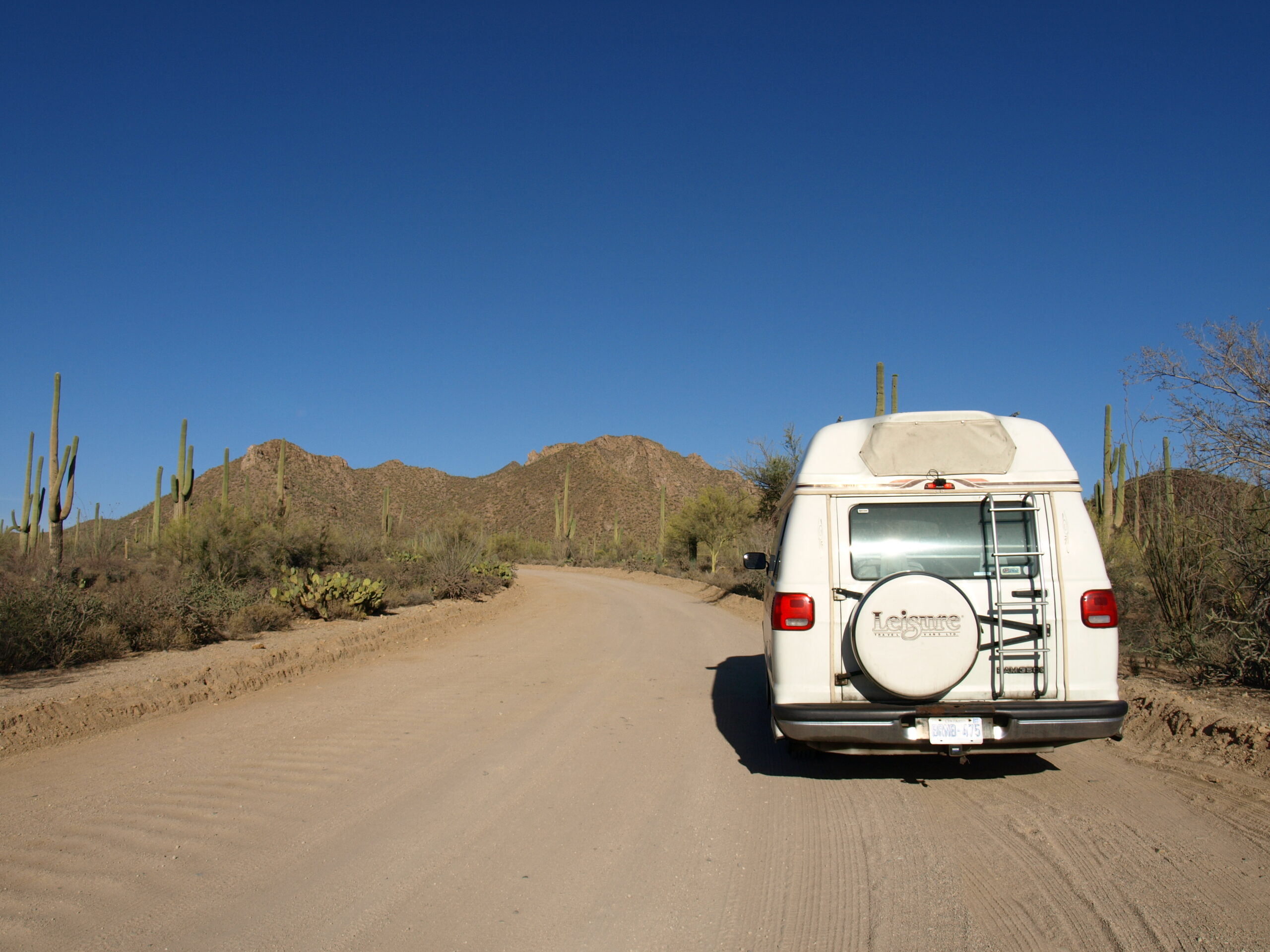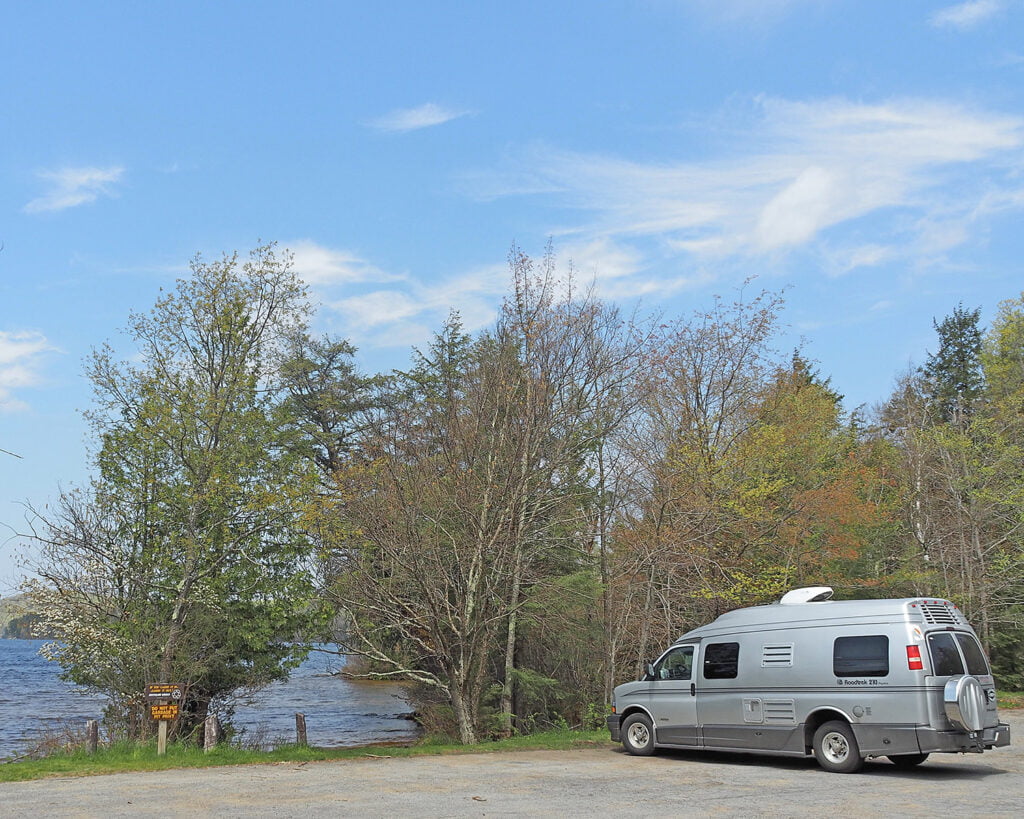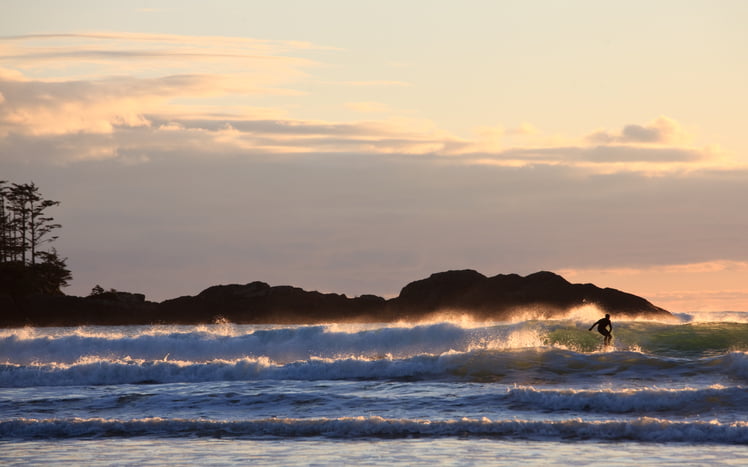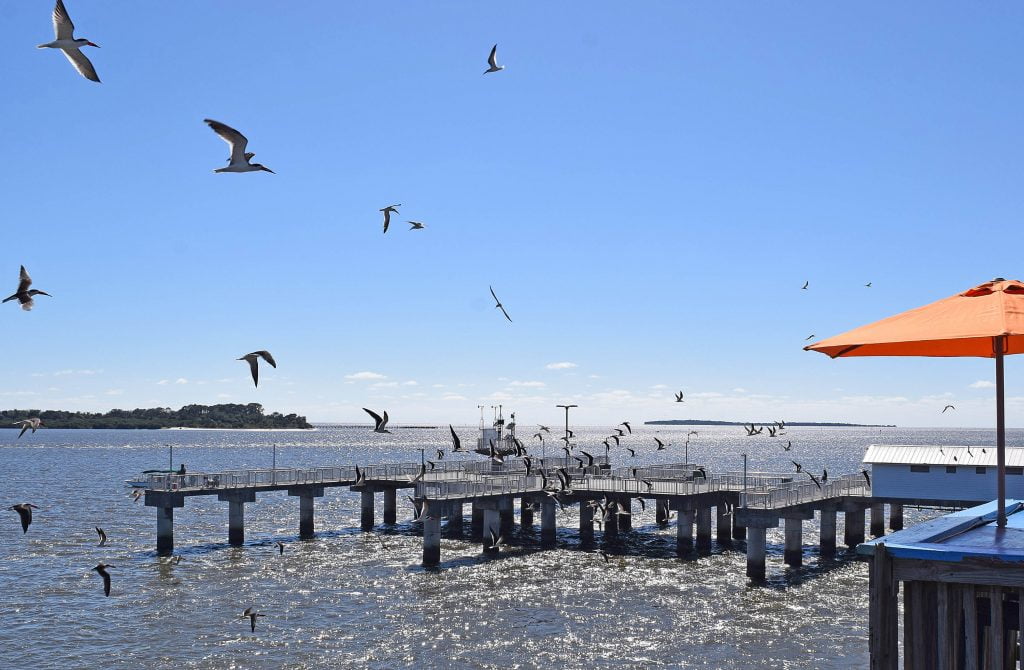Southern Arizona is a magnet for RVers who love the outdoors, warm wintertime temperatures, and activities like hiking, bird-watching, and learning about Native American cultures.
GET OUTDOORS!
The enormous Sonoran Desert sprawls across much of southern Arizona, and it’s here that you find that iconic sentinel of the desert, the multi-armed saguaro cactus. There is no better introduction to this ecozone than through the Arizona-Sonora Desert Museum in Tucson. It’s a world-renowned zoo, natural history museum, aquarium, and botanical garden, with exhibits of hundreds of animal species and 1,000-plus kinds of plants. Take a docent-led tour, visit the hummingbird aviary and the raptor free flight demonstrations. After learning what makes this desert environment unique, step outside and hike the trails at nearby Saguaro National Park.
Adventuresome spelunkers can explore the cave openings at the world-famous Kartchner Caverns State Park. The ranger-led tour is first-class, emphasizing the preservation of these unique underground formations. In November 2024, the park celebrates the 50th anniversary of two young explorers accidentally discovering the caves. For those who need a little more breathing room, Colossal Cave Mountain Park near Tucson offers guided tours into the world of cave formations like stalactites, stalagmites, and helictites.
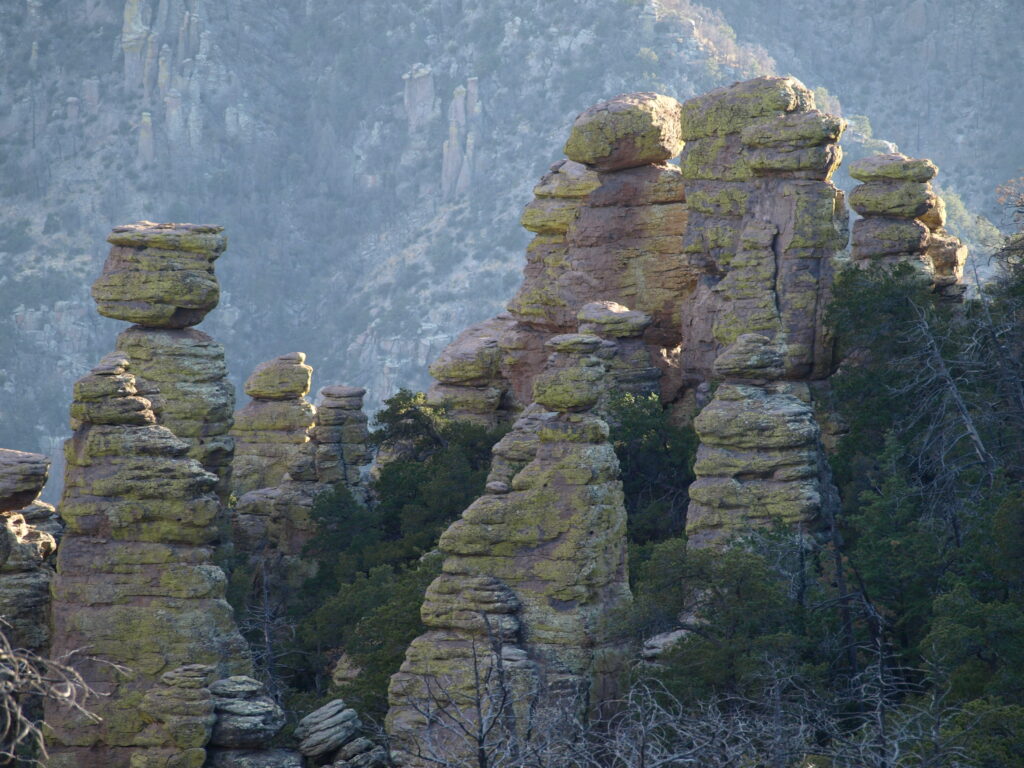
Tucked into the southeast corner of Arizona, Chiricahua National Monument has mountains and fantastic rock formations rising above the surrounding grasslands with nicknames like “island in the desert” and “wonderland of rocks.” The balanced rocks, columns, spires, and pinnacles were created millions of years ago when gigantic volcanic eruptions left the area covered in compacted ash, lifted by forces and sculpted by wind and water. The surrounding straw-coloured grasslands meet the upland forests of Douglas fir, aspen, and endemic Arizona cypress.
The Chiricahua Apache and their leader Geronimo found ample hiding places in “the land of standing-up rocks” during their conflicts with the U.S. Army. Early pioneers made do, made it up or did without. That pioneering spirit is frozen in time at the park’s log cabins and the large homestead of Faraway Ranch.
Chiricahua has trails for all ability levels, from a wheelchair-accessible nature trail to all-day hikes through complicated rock formations. The 13-km scenic drive to Massai Point is a day-end favourite when the setting sun leaves an afterglow on the rocks of the sky island.
Chiricahua’s Bonita Springs campground is small (25 sites), with restrooms but no hookups or showers. Some turns into the campground are tight, so vehicle length is limited to 29 feet.
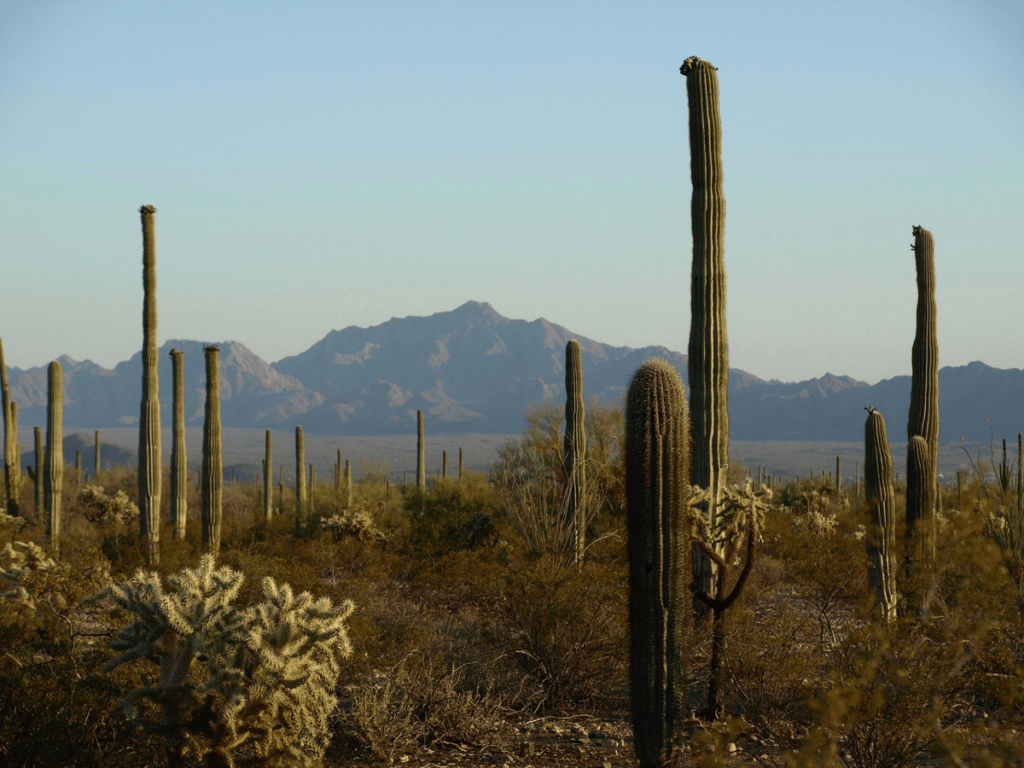
The first thing you notice about Organ Pipe Cactus National Monument is how out of the way it is. Halfway between Yuma and Tucson, turn south at Gila Bend and continue through 95 kilometres of Sonoran Desert until almost to the borderline with Mexico.
The Sonoran Desert is known for its biodiversity (the park is a UNESCO Biosphere Reserve), home to some 30 types of cacti, including saguaro, cholla, ocotillo, and the rare organ pipe. It’s the only place in the nation where large organ pipe cacti grow in the wild. Desert hiking is best in the morning or evening when it’s cooler.
A 34-km graded dirt road along the scenic Ajo Mountain Loop crosses the Diablo and Ajo Mountains through dense “forests” of thorny ocotillo, giant saguaro, and organ pipe cacti. The narrow washboard road could be problematic for larger rigs, but the two-hour trip is a plunge into the diverse life community of the Sonoran Desert. There are picnic pull-outs along the way, marked hiking trails, and peace and quiet.
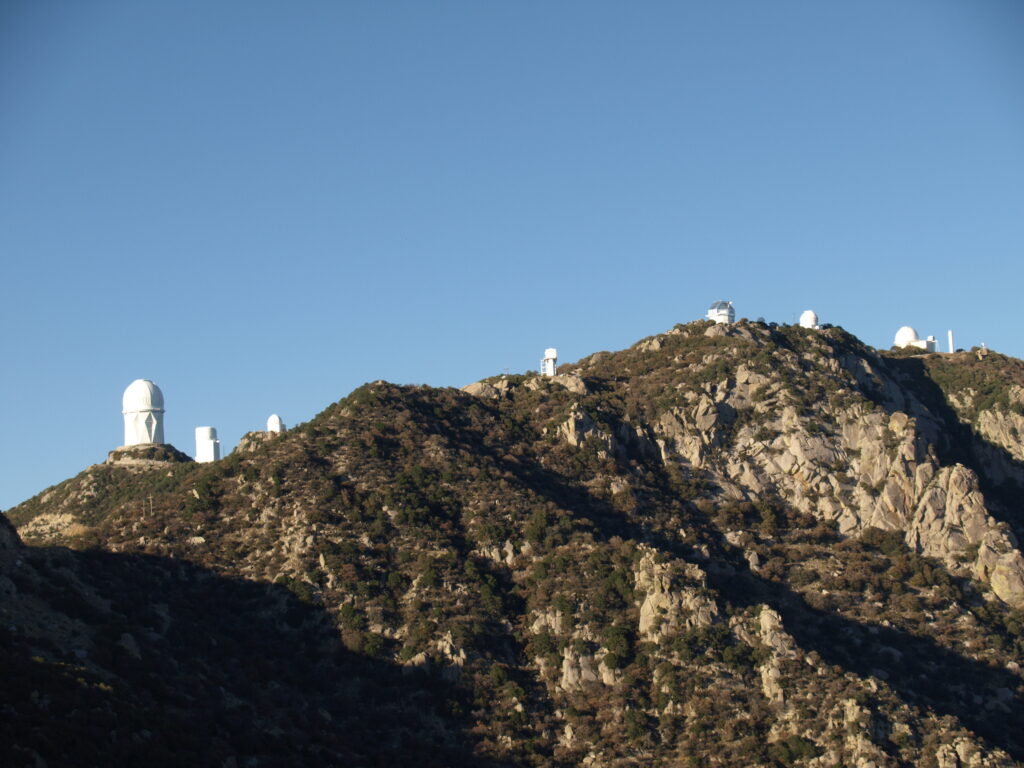
LOOK WAY, WAY UP
When the sun goes down in Arizona, it’s hard to beat the show put on by the moon and stars. With temperate weather, low pollution, and clear night skies, the state is an astronomer’s dream and home to various observatories, nighttime astronomy programs, and stargazing events.
Kitt Peak National Observatory, southwest of Tucson, has several dozen research telescopes, including the world’s largest solar telescope. Guided daytime and nighttime tours provide a great introduction to the brilliance of the skies. Note that the road to Kitt Peak is steep and narrow at spots and would be a challenge for larger RVs.
Observing the show in the night sky at star parties is another popular activity at Chiricahua National Monument, close to New Mexico’s border in the state’s far southeast. Kartchner Caverns – an International Dark Sky Park – also runs star parties through the fall months.
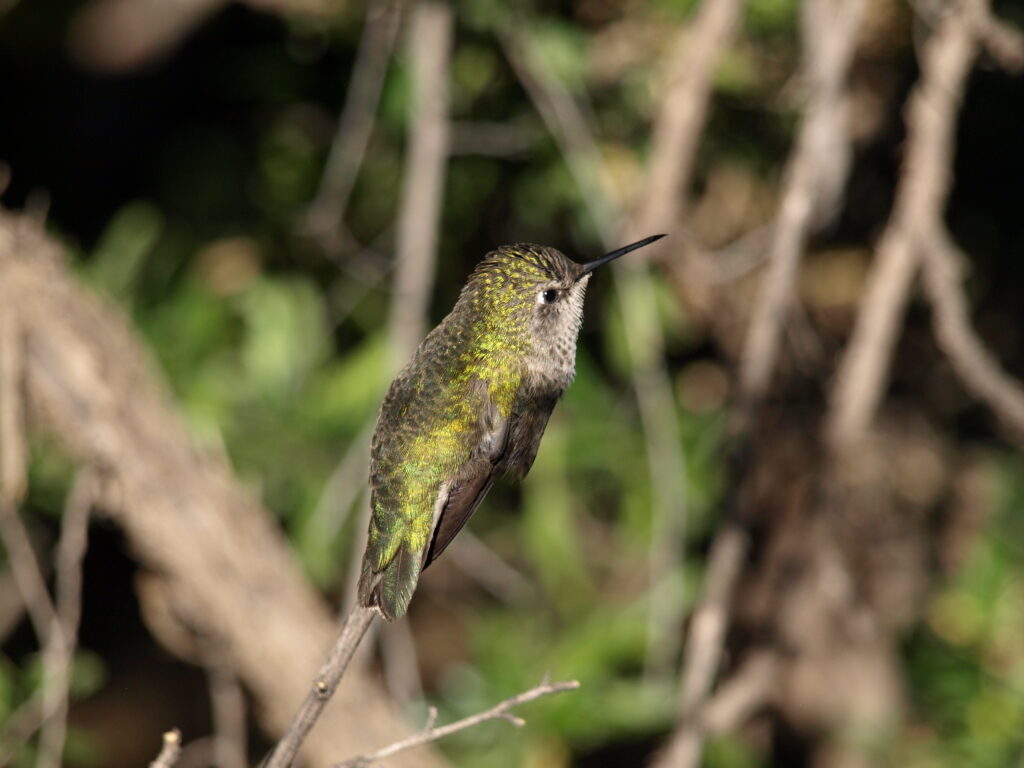
LOOKING FOR BIRDS?
With a temperate climate and a wide diversity of terrain, Arizona’s sunny skies are a birder’s paradise. More than 500 species of birds pass through a green corridor as they migrate from northern nesting grounds to southern wintering climes. Birding hotspots like The Nature Conservancy’s Ramsey Canyon Preserve and the “sky island” Huachuca Mountains attract serious birders who return year after year. At Organ Pipe National Monument, more than 270 species are present, making it a stunning display of Sonoran Desert birdlife.
Many visitors come for the annual bird festivals. In January, the Wings Over Willcox Birding & Nature Festival combines a nature expo, educational seminars, and tours of southeast Arizona’s geology, botany, and archaeology. In Sierra Vista, the state’s longest-running nature festival, the Southwest Wings Birding and Nature Festival, includes everything about birding plus guided nature tours.
NATIVE AMERICAN CULTURE
Arizona is the sacred heart of the Southwest, where land and culture are inseparable for the Indigenous tribes who call this home and still carry on the centuries-old traditions of their ancestors. Arizona’s reservations and pueblos are sovereign nations with their own customs and tribal laws.
The tribal lands allow visitors to experience a rich tapestry of ceremony, art, cuisine, and custom – whether examining prehistoric ruins, witnessing a tribal festival or discovering the heart of Native American history. Show respect when visiting, and the journey will be a memorable one like no other.
An hour southeast of Tucson, the Amerind Foundation is an anthropological and archaeological museum and research centre that features the story and culture of Indigenous peoples. Its fragile exhibits include a bow made and signed by Geronimo and a set of Apache rawhide playing cards.
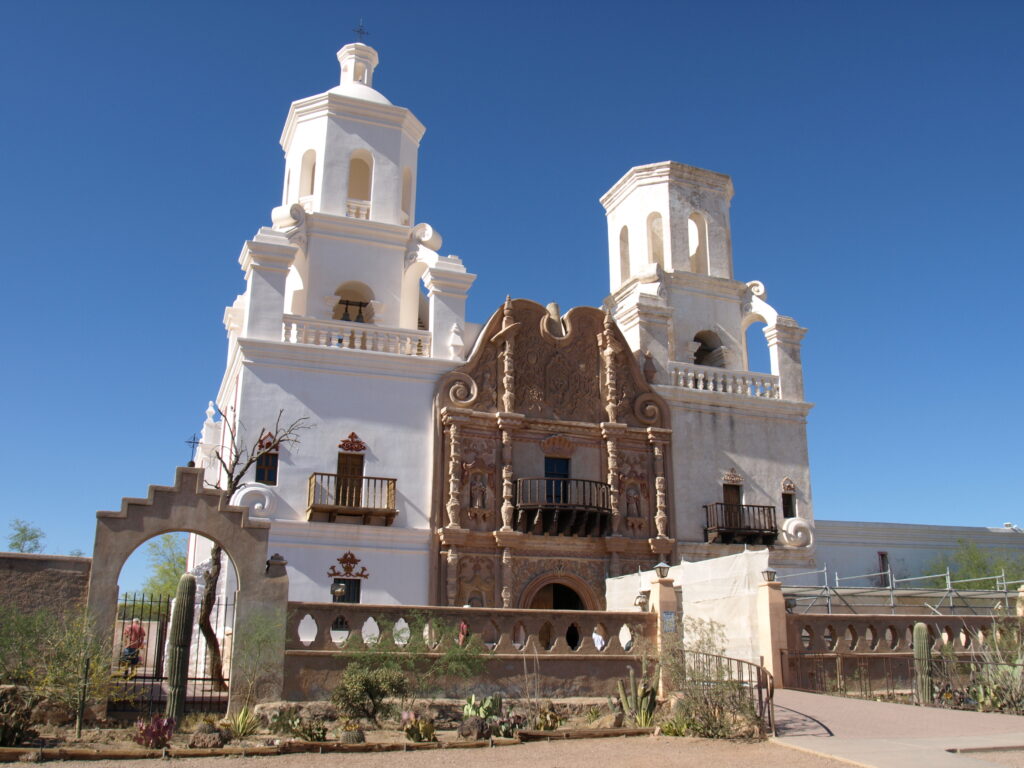
In the south, just outside Tucson, the lands of the Tohono O’odham nation include the beautiful Spanish San Xavier del Bac Mission (known as the White Dove of the Desert), a National Historic Landmark established by Jesuit missionaries. Arizona’s oldest intact European structure, the working church, is considered the finest example of Spanish Colonial architecture in the United States. The Tohono O’odham are most likely descendants of the prehistoric Hohokam Culture, whose centuries-old traditions and beliefs continue to be handed down from one generation to another. They are well known for their artistic basket weaving.
URBAN BREAKS
Five mountain ranges encircle Tucson; it’s a big city with a small town that feels rooted in a time when settlers of the American West came in search of land for ranching and mining. Tucson was also a crossroads when 16th-century Spanish conquistadors hunted for the mythical Seven Cities of Gold. The Hispanic influence is alive in the region’s architecture, language, foods, and culture. www.visittucson.org
A few Tucson highlights:
-
-
- Downtown Tucson is an architectural and historical goldmine. The Barrio Histórico neighbourhood’s colourful adobe-walled row houses are painted bright red, blue, and yellow. Along the self-guided Presidio Trail, walkers can explore El Presidio National Historic District – Tucson’s oldest neighbourhood.
-

-
-
- The hard clay ground at the country’s Pima Air & Space Museum makes the perfect storage surface for retired aircraft. The massive hangars and acreage showcase the history of flight and American aviation technology, from Kitty Hawk to supersonic.
- Just north of Tucson, the University of Arizona Biosphere 2 recreates a controlled western hemisphere rainforest under an enormous glass roof dedicated to understanding the impacts of climate change.
- South of the city, the Titan Missile Museum houses the last of the 54 Titan II missiles that were on alert across the U.S. from 1963 to 1987.
-

Some of southern Arizona’s smaller towns have not-to-be-missed sights:
-
-
- Bisbee’s Copper Queen Mine Tour takes visitors into retired mine shafts at one of the state’s oldest copper mines to learn about working underground in the early 20th century.
- Bisbee’s main street is lined with quirky galleries and independent shops featuring the work of local artisans.
- Tubac Presidio State Historic Park is a snapshot in time documenting key influences in the town’s history, including Native tribes, Spanish missionaries, and the military.
- Tubac is also a cultural hotspot, with adobe-style buildings housing artists, gallery owners, small clothing shops, and jewellery makers.
-

-
-
- In Tombstone (“The Town Too Tough to Die”), visitors get a taste of the Old West at the O.K. Corral, where they re-enact the famous shootout daily, and the Bird Cage Theatre, with its vintage décor as a theatre, saloon, gambling hall, and brothel.
-
DINING
Chile-fuelled flavours are an everyday part of the Arizona lifestyle.
-
-
- The signature dish at El Charro Café in Tucson’s historic El Presidio District is Carne Seca, made of marinated beef sundried on rooftop racks, shredded, and grilled with green chile, onions, and tomatoes.
- Try a Tucson specialty – the Sonoran Hot Dog – along with The Best 23 Miles of Mexican Food. Tucson boasts it has the best Mexican food north of the border.
- Southeast Arizona’s Salsa Trail connects a dozen spicy eateries that set tastebuds ablaze with dishes like Huevos Rancheros, hot jalapeno salsa, and Chiles Rellenos.
-
U.S. NATIONAL PARKS:
America the Beautiful Pass
Canadians can purchase an annual parks pass ($80 USD) for a 12-month period, which allows them to enter any of the National Park Service properties. Normal single-park entries range from $15 to $30.
Did you know?
A National Park is established by an Act of Congress. A National Monument, which may be just as impressive in scope and features, is created by a proclamation of the President of the United States.

